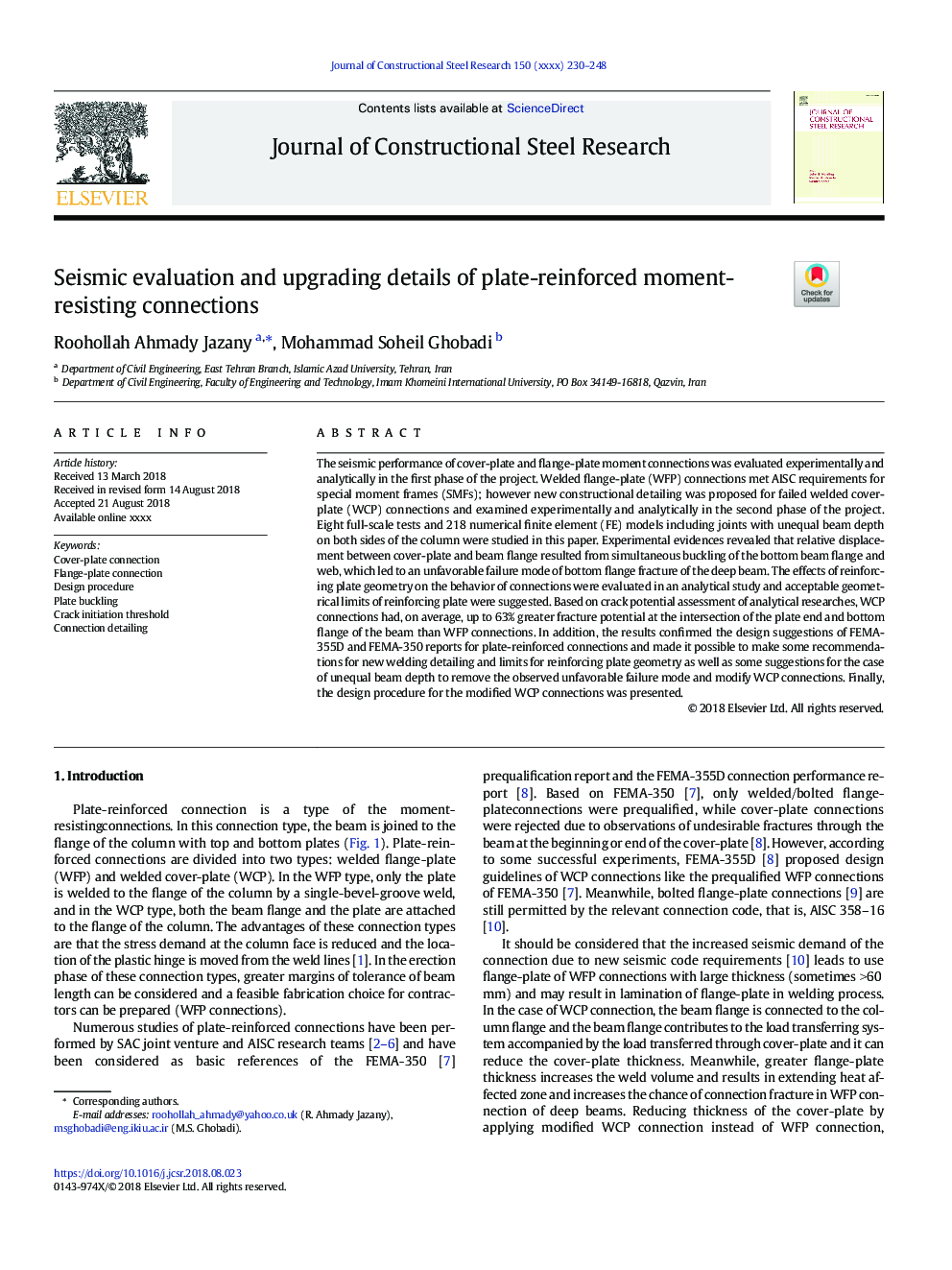| Article ID | Journal | Published Year | Pages | File Type |
|---|---|---|---|---|
| 10131955 | Journal of Constructional Steel Research | 2018 | 19 Pages |
Abstract
The seismic performance of cover-plate and flange-plate moment connections was evaluated experimentally and analytically in the first phase of the project. Welded flange-plate (WFP) connections met AISC requirements for special moment frames (SMFs); however new constructional detailing was proposed for failed welded cover-plate (WCP) connections and examined experimentally and analytically in the second phase of the project. Eight full-scale tests and 218 numerical finite element (FE) models including joints with unequal beam depth on both sides of the column were studied in this paper. Experimental evidences revealed that relative displacement between cover-plate and beam flange resulted from simultaneous buckling of the bottom beam flange and web, which led to an unfavorable failure mode of bottom flange fracture of the deep beam. The effects of reinforcing plate geometry on the behavior of connections were evaluated in an analytical study and acceptable geometrical limits of reinforcing plate were suggested. Based on crack potential assessment of analytical researches, WCP connections had, on average, up to 63% greater fracture potential at the intersection of the plate end and bottom flange of the beam than WFP connections. In addition, the results confirmed the design suggestions of FEMA-355D and FEMA-350 reports for plate-reinforced connections and made it possible to make some recommendations for new welding detailing and limits for reinforcing plate geometry as well as some suggestions for the case of unequal beam depth to remove the observed unfavorable failure mode and modify WCP connections. Finally, the design procedure for the modified WCP connections was presented.
Keywords
Related Topics
Physical Sciences and Engineering
Engineering
Civil and Structural Engineering
Authors
Roohollah Ahmady Jazany, Mohammad Soheil Ghobadi,
